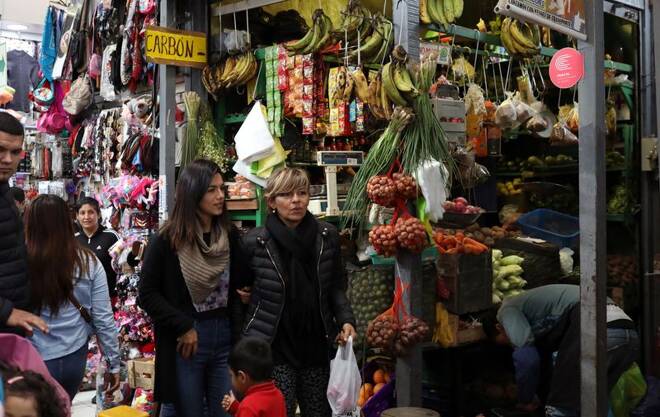Advertisement
Advertisement
Peru inflation eases in January, but annual rate ticks up amid unrest
By:
(Reuters) - Peru's consumer prices rose less than expected in January despite growing political tensions, but the 12-month rate still ticked up as the Andean nation battles the highest inflation in a quarter of a century.
By Gabriel Araujo
(Reuters) -Peru’s consumer prices rose less than expected in January despite the impact of growing political tensions, but the 12-month rate ticked up as the Andean nation battles the highest inflation in a quarter of a century, with fresh rate hikes still on the table.
Government data showed on Wednesday that consumer prices in the Lima metropolitan region, seen as the national benchmark, were up 0.23% in the first month of the year, well below the median forecast of 0.43% in a Reuters poll of economists.
It was the lowest monthly increase since January of last year, slowing from the 0.79% rise seen in the previous month, although not enough to prevent annual inflation from hitting its highest since July.
Data from statistics agency INEI showed that consumer prices rose 8.66% in the 12 months through January, remaining near a quarter-century peak reached last year, though below a projection made by Economy Minister Alex Contreras last month.
Contreras said annual inflation would likely soar over 8.8% in January after protests and road blockades pushed up food prices. He did note that the move would be temporary due to stimulus measures the government was proposing for regions roiled by protests.
Peru, the world’s No. 2 copper producer, has been embroiled in political turmoil since December, with anti-government protests blocking roads and clashes with security forces leading to the deaths of dozens of people.
Economists at BBVA Research said they expect year-on-year inflation to continue at high levels in the short term, even above 8%, as the persistent unrest affecting food supply, alongside lack of rains and high fertilizer costs, takes its toll on local prices.
The latest monthly inflation increase was mainly due to higher food and non-alcoholic beverage costs, as well as rising hotel and restaurant prices, INEI said in a report. Decreasing transportation costs partially offset those rises.
The fresh data also follows aggressive monetary tightening, as Peru’s central bank has raised its benchmark interest rate periodically since the second half of 2021 to combat inflation that surged well ahead of its 1%-to-3% target range.
The latest 25 basis-point hike to 7.75% happened in January, when the central bank said a downward trend in inflation was projected from March, and a return to the range in the fourth quarter.
BBVA economists, however, noted that inflation expectations for 2023 remain above 4%, saying in a report that “despite the weakness of economic activity, we do not rule out that the central bank finds it prudent to raise its interest rate a little more, to 8.0% in February”.
(Reporting by Gabriel Araujo in Sao Paulo; Editing by Steven Grattan and Bill Berkrot)
About the Author
Reuterscontributor
Reuters, the news and media division of Thomson Reuters, is the world’s largest international multimedia news provider reaching more than one billion people every day. Reuters provides trusted business, financial, national, and international news to professionals via Thomson Reuters desktops, the world's media organizations, and directly to consumers at Reuters.com and via Reuters TV. Learn more about Thomson Reuters products:
Did you find this article useful?
Latest news and analysis
Advertisement
